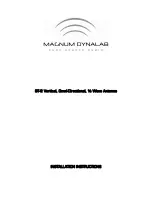
SE868Kx-Ax Family Product User Guide
1VV0301201 Rev. 5
Page 67 of 83
2021-07-15
Not Subject to NDA
ESD Sensitivity
Note/Tip: The modules contain class 1 devices and are Electro-Static
Discharge Sensitive (ESDS).
The modules contain class 1 devices and are Electro-Static Discharge Sensitive (ESDS).
Telit recommends the two basic principles of protecting ESD devices from damage:
•
Handle sensitive components only in an ESD Protected Area (EPA) under protected
and controlled conditions;
•
Protect sensitive devices outside the EPA using ESD protective packaging.
All personnel handling ESDS devices have the responsibility to be aware of the ESD threat
to the reliability of electronic products.
Further information can be obtained from the JEDEC standard JESD625-A Requirements
for Handling Electrostatic Discharge Sensitive (ESDS) Devices
”,
which can be downloaded
free of charge from:
Assembly Considerations
Since the module contains piezo-electric components, it should be placed near the end
of the assembly process to minimize mechanical shock to it.
During board assembly and singulation process steps, pay careful attention to unwanted
vibrations, resonances and mechanical shocks, for exmple, those introduced by
manufacturing equipment.
Washing Considerations
After assembly, the module can be washed with de-ionized water using standard PCB
cleaning procedures. The shield does not provide a water seal to the internal components
of the module, so it is important that the module be thoroughly dried prior to use by
blowing excess water and then baking the module to drive residual moisture out.
Depending upon the board cleaning equipment, the drying cycle may not be sufficient to
thoroughly dry the module, so additional steps may need to be taken. The exact process
details will need to be determined by the type of washing equipment as well as other
components on the board to which the module is attached. The module itself can
withstand standard JEDEC baking procedures.
















































